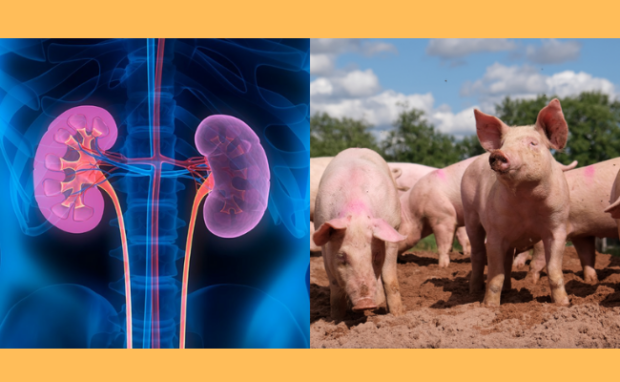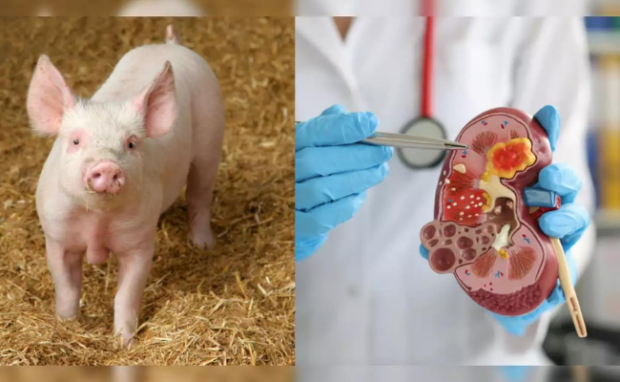Chinese scientists grow first-ever humanized kidneys in pigs
Chinese scientists made a world record for growing the first-ever humanized kidneys in pigs. In other words, they have figured out how to create organs in pigs, potentially helping those who need transplants. We could use this method to produce vital body parts instead of waiting for donors. Still, the project requires further research and development for real-life applications.
The experts admitted their experiment has several flaws, but it may pave the way for better healthcare. According to the University of California San Francisco’s Kidney Project, around two million people worldwide experience kidney failure. Using this research to provide a more reliable organ transplant supply could significantly reduce that amount.
This article will discuss how the Guangzhou Institutes of Biomedicine and Health produced humanized kidneys in pigs. Later, I will explain its possibilities and limitations.
How did scientists create humanized kidneys?

Photo Credit: mashable.com
ScienceDaily reported Guangzhou Institutes of Biomedicine and Health experts combined embryos with pig and human cells. Transferring them to surrogate pig mothers produces humanized kidneys.
These organs had a normal structure and tubule formation after 28 days. As a result, their research marks the first time people grew humanized body parts inside another species.
The news outlet said integrating stem cells into pig embryos was difficult because pig cells “outcompete human cells and pig and human cells have different physiological needs.” Yet, senior author Guangjin Pan found a solution.
“We have been working on mechanisms to overcome the extremely low efficiency in interspecies chimera,” he stated. “We identified a couple of critical factors that enhance the formation of interspecies chimera by facilitating cell competition.” Here’s how it worked:
- The scientists create a niche within a pig embryo so that human cells would not have to compete with pig cells. In other words, they used CRISPR so the pig embryo would lack two kidney development genes.
- Next, researchers engineered human pluripotent stem cells, which can develop into any cell type. Consequently, they are more likely to integrate with a pig and less likely to self-destruct.
- Then, the Guangzhou Institute researchers cultured these cells in a special medium. As a result, they turn them into “naive” cells resembling early human embryonic cells.
- The scientists grew these hybrids or chimeras in unique nutrients because human and pig cells have different needs.
- Afterward, they implanted the developing embryos in surrogate sows.
The researchers transferred 1,820 embryos to 13 surrogate embryos. After 25 to 28 days, they ceased gestation and extracted embryos to see whether the animal hybrids produced humanized kidneys. They discovered the embryos gained buds and tubules that would become ureters connecting the kidney to the bladder.
What are the potential benefits and risks?

Photo Credit: economictimes.com
The humanized kidneys require further improvements to become viable and safe transplant options. That is why the researchers let them develop longer.
Guangjin Pan and his team want to produce other human organs in pigs, like a heart and pancreas. However, they admitted they would need more time to complete their work.
Producing a fully functional humanized organ from an animal would require additional steps because organs consist of multiple cells and tissues. Pan and the other scientists only made a niche for one cell subset.
That means their humanized kidneys would cause organ rejection in a real-life transplant scenario. Senior author Miguel A. Esteban explained:
“Because organs are not composed of just one cell lineage, in order to have an organ where everything comes from the human, we would probably need to engineer the pigs in a much more complex way, and that also brings some additional challenges.”
Nonetheless, their findings could facilitate studying human organ development and diseases. “Before we get to that late state of making organs that can be on the shelf for clinical practice, this method provides a window for studying human development,” said Esteban.
Conclusion
Chinese scientists successfully created humanized kidneys inside a pig. As a result, they discovered a promising method of developing human organs.
The researchers admitted they need more time and research to turn it into a practical healthcare solution. If they succeed, they could potentially save millions annually from kidney failure and other diseases.
Other scientists have been creating astounding genetic advancements. For example, French startup Neoplants created air-cleaning houseplants. Check out more digital tips and trends at Inquirer Tech.